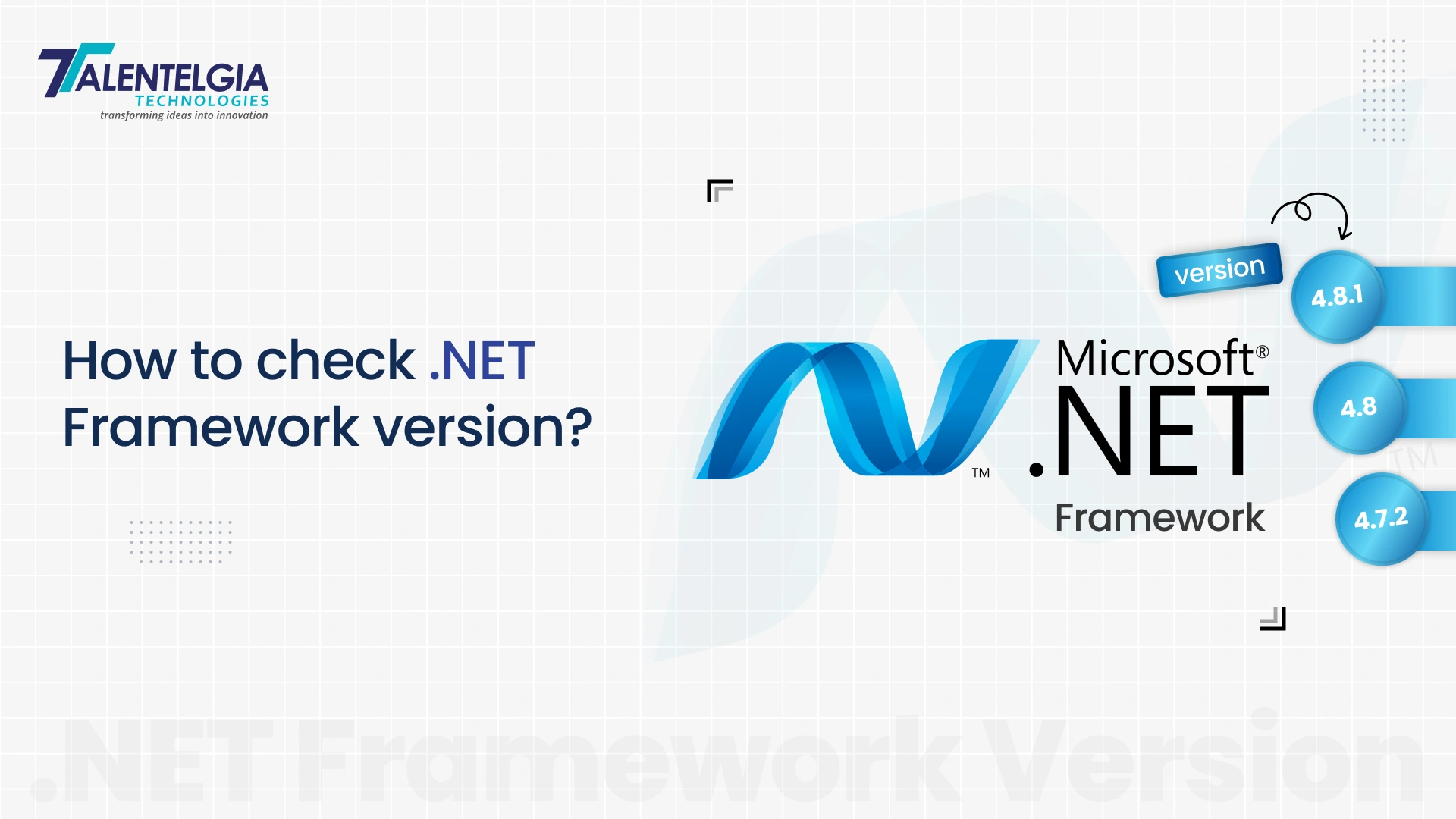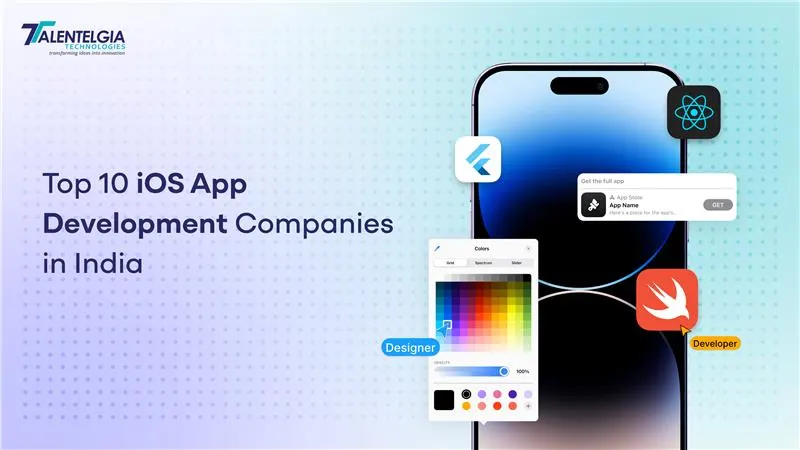If you’re a developer who needs to test compatibility with various versions of the library or an IT professional who needs to plan a software upgrade, it’s helpful to have a list of which Microsoft. Net Framework on your PC becomes essential. The .NET Framework underlies many applications running on Windows, from a small desktop application to an app deployed in the cloud. But despite how significant it is, many users don’t know how easily and quickly to check what version they’re running.
In this post, we’re going to show you some easy ways, some of which are for beginners how to check if a file is empty or not. The .NET Framework version you are using helps make your environment current, compatible, and ready for what you want to build or run. Let’s get started:
What is the .NET Framework?
The .NET Framework is a software development platform created by Microsoft. It provides the tools, libraries, and runtime needed to build and run Windows applications. It supports several programming languages like C#, F#, and VB.NET, and helps developers create everything from desktop apps to cloud-based services. While newer versions like .NET Core and .NET 6+ are used for cross-platform apps, the .NET Framework is still widely used for older and Windows-only software.
Major Components of the .NET Framework
The .NET Framework is made up of several important parts that work together to help developers build reliable and efficient applications. Understanding its key components can give you a clearer picture of how it manages tasks and speeds up .NET development.
Common Language Runtime (CLR)
At the core of the. Framework as the Common Language Runtime (CLR) is a virtual machine that provides services such as security, memory management, and exception handling. .NET applications. It provides critical services like memory management, exception handling, threading, and security. Code executing under the CLR is known as managed code, and code that is not under it is unmanaged code.
.NET Framework Class Library (FCL)
The. NET Class Library comes with a wide range of pre-designed, ready-to-use operations to help expedite your application development. From file I/O and networking to data management and user interface design, the FCL makes development faster by providing you with tested, optimized solutions for typical programming tasks.
To check the .NET Framework version:
- Go to Start menu > Control Panel.
- Click “Programs” or “Programs and Features”.
- Scroll down to “Microsoft .NET Framework”.
- Check the version number next to each entry. It’s usually in a format like “vX.Y.ZZZZ”.
How to Check Microsoft .NET Framework Version on Your Windows PC (3 Easy Methods)?
You should be aware of which Microsoft .NET Framework version is already on your PC if you’re running Windows, or you can download it for your system. Here are three simple ways you can do it on Windows.
Method 1: Check .NET Framework Version through Control Panel
One of the easiest ways to verify your .NET Framework version is via the Control Panel. Follow these steps:
- Open Control Panel
- Press the Windows button, type “Control Panel” in the search box, and click on it.
- Navigate to Programs
- Click on the “Programs” category in Control Panel, which has the installed software and features.
- Now you should click on ‘Programs and Features’
- You should see (these numbers do not necessarily correspond to the numbers on your system) a list of every program installed on your system.
- Find Microsoft .NET Framework
- Scroll down until you see an item titled “Microsoft. NET Framework”. The version number is generally located nearby.
Method 2: Check .NET Framework Version Using Command Prompt
For users who prefer command-line tools, the Command Prompt offers a quick and efficient way to retrieve the installed .NET versions:
Open Command Prompt
Press Windows + R, type cmd, and hit Enter.
Run the version check command
wmic /namespace:\\root\cimv2 path win32_product where “name like ‘Microsoft .NET Framework%'” get version
- View the results
You’ll see a list of installed versions displayed in the Command Prompt window.
- Identify the latest version
Review the version numbers to identify the most recent .NET Framework installed.
Method 3: Check .NET Framework Version via Registry Editor
If you want the most detailed and accurate information, the Registry Editor gives you access to backend system data:
- Open Registry Editor
Press Windows + R, type regedit, and press Enter to launch the Registry Editor.
- Navigate to the .NET Framework Registry Key
HKEY_LOCAL_MACHINE\SOFTWARE\Microsoft\NET Framework Setup\NDP
- Explore Installed Versions
Under the NDP key, you’ll see folders like v4, v4.0, or v4.5. These subkeys represent different .NET Framework versions. Select each to view details in the right-hand pane, including the version number and install status.
Conclusion
Knowing which version of the .NET Framework is present on your system is not a mere technical detail—it’s a prerequisite for compatibility, robustness, and smooth functioning of the applications you create or utilize. You may be a developer setting your environment, or an IT professional who needs to maintain systems, it will only take a couple more minutes to check, and these can save up hours of frustration in the field. As Microsoft evolves its ecosystem, knowing the current version of your framework can help you consider updates, migrations, and prepare your stack for the future.


 Healthcare App Development Services
Healthcare App Development Services
 Real Estate Web Development Services
Real Estate Web Development Services
 E-Commerce App Development Services
E-Commerce App Development Services E-Commerce Web Development Services
E-Commerce Web Development Services Blockchain E-commerce Development Company
Blockchain E-commerce Development Company
 Fintech App Development Services
Fintech App Development Services Fintech Web Development
Fintech Web Development Blockchain Fintech Development Company
Blockchain Fintech Development Company
 E-Learning App Development Services
E-Learning App Development Services
 Restaurant App Development Company
Restaurant App Development Company
 Mobile Game Development Company
Mobile Game Development Company
 Travel App Development Company
Travel App Development Company
 Automotive Web Design
Automotive Web Design
 AI Traffic Management System
AI Traffic Management System
 AI Inventory Management Software
AI Inventory Management Software
 AI Software Development
AI Software Development  AI Development Company
AI Development Company  AI App Development Services
AI App Development Services  ChatGPT integration services
ChatGPT integration services  AI Integration Services
AI Integration Services  Generative AI Development Services
Generative AI Development Services  Natural Language Processing Company
Natural Language Processing Company Machine Learning Development
Machine Learning Development  Machine learning consulting services
Machine learning consulting services  Blockchain Development
Blockchain Development  Blockchain Software Development
Blockchain Software Development  Smart Contract Development Company
Smart Contract Development Company  NFT Marketplace Development Services
NFT Marketplace Development Services  Asset Tokenization Company
Asset Tokenization Company DeFi Wallet Development Company
DeFi Wallet Development Company Mobile App Development
Mobile App Development  IOS App Development
IOS App Development  Android App Development
Android App Development  Cross-Platform App Development
Cross-Platform App Development  Augmented Reality (AR) App Development
Augmented Reality (AR) App Development  Virtual Reality (VR) App Development
Virtual Reality (VR) App Development  Web App Development
Web App Development  SaaS App Development
SaaS App Development Flutter
Flutter  React Native
React Native  Swift (IOS)
Swift (IOS)  Kotlin (Android)
Kotlin (Android)  Mean Stack Development
Mean Stack Development  AngularJS Development
AngularJS Development  MongoDB Development
MongoDB Development  Nodejs Development
Nodejs Development  Database Development
Database Development Ruby on Rails Development
Ruby on Rails Development Expressjs Development
Expressjs Development  Full Stack Development
Full Stack Development  Web Development Services
Web Development Services  Laravel Development
Laravel Development  LAMP Development
LAMP Development  Custom PHP Development
Custom PHP Development  .Net Development
.Net Development  User Experience Design Services
User Experience Design Services  User Interface Design Services
User Interface Design Services  Automated Testing
Automated Testing  Manual Testing
Manual Testing  Digital Marketing Services
Digital Marketing Services 
 Ride-Sharing And Taxi Services
Ride-Sharing And Taxi Services Food Delivery Services
Food Delivery Services Grocery Delivery Services
Grocery Delivery Services Transportation And Logistics
Transportation And Logistics Car Wash App
Car Wash App Home Services App
Home Services App ERP Development Services
ERP Development Services CMS Development Services
CMS Development Services LMS Development
LMS Development CRM Development
CRM Development DevOps Development Services
DevOps Development Services AI Business Solutions
AI Business Solutions AI Cloud Solutions
AI Cloud Solutions AI Chatbot Development
AI Chatbot Development API Development
API Development Blockchain Product Development
Blockchain Product Development Cryptocurrency Wallet Development
Cryptocurrency Wallet Development About Talentelgia
About Talentelgia  Our Team
Our Team  Our Culture
Our Culture 
 Healthcare App Development Services
Healthcare App Development Services Real Estate Web Development Services
Real Estate Web Development Services E-Commerce App Development Services
E-Commerce App Development Services E-Commerce Web Development Services
E-Commerce Web Development Services Blockchain E-commerce
Development Company
Blockchain E-commerce
Development Company Fintech App Development Services
Fintech App Development Services Finance Web Development
Finance Web Development Blockchain Fintech
Development Company
Blockchain Fintech
Development Company E-Learning App Development Services
E-Learning App Development Services Restaurant App Development Company
Restaurant App Development Company Mobile Game Development Company
Mobile Game Development Company Travel App Development Company
Travel App Development Company Automotive Web Design
Automotive Web Design AI Traffic Management System
AI Traffic Management System AI Inventory Management Software
AI Inventory Management Software AI Software Development
AI Software Development AI Development Company
AI Development Company ChatGPT integration services
ChatGPT integration services AI Integration Services
AI Integration Services Machine Learning Development
Machine Learning Development Machine learning consulting services
Machine learning consulting services Blockchain Development
Blockchain Development Blockchain Software Development
Blockchain Software Development Smart contract development company
Smart contract development company NFT marketplace development services
NFT marketplace development services IOS App Development
IOS App Development Android App Development
Android App Development Cross-Platform App Development
Cross-Platform App Development Augmented Reality (AR) App
Development
Augmented Reality (AR) App
Development Virtual Reality (VR) App Development
Virtual Reality (VR) App Development Web App Development
Web App Development Flutter
Flutter React
Native
React
Native Swift
(IOS)
Swift
(IOS) Kotlin (Android)
Kotlin (Android) MEAN Stack Development
MEAN Stack Development AngularJS Development
AngularJS Development MongoDB Development
MongoDB Development Nodejs Development
Nodejs Development Database development services
Database development services Ruby on Rails Development services
Ruby on Rails Development services Expressjs Development
Expressjs Development Full Stack Development
Full Stack Development Web Development Services
Web Development Services Laravel Development
Laravel Development LAMP
Development
LAMP
Development Custom PHP Development
Custom PHP Development User Experience Design Services
User Experience Design Services User Interface Design Services
User Interface Design Services Automated Testing
Automated Testing Manual
Testing
Manual
Testing About Talentelgia
About Talentelgia Our Team
Our Team Our Culture
Our Culture

















 Write us on:
Write us on:  Business queries:
Business queries:  HR:
HR: 




